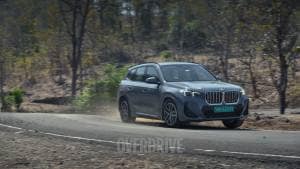2023 Audi Q3 vs BMW X1 comparison review - Back at it
You've been on the lookout for your first luxury car, and of course, it needs to be an SUV. As it happens things seem to be looking good for you. Aside from the usual suspects from Mercedes and Volvo, there have been two new entrants in this segment in the past year. The second-gen Audi Q3 has finally made its way to India, and there is, after what seems like forever, a brand-new BMW X1.
2023 Audi Q3 vs BMW X1 styling, dimensions
The Audi and BMW may be aimed at the same buyer, and be similarly sized, but the two make their presence felt out on the road quite differently. The X1 is 18mm longer and 35mm taller but makes a bigger statement than the numbers suggest with its more extroverted look. The large grille plays a big part in this. The heavy dose of chrome draws as much attention as the full-face grille in the Audi. The headlamps may be a touch simpler than the ones in the Audi but attention is drawn to the BMW with its more prominent surfaces, especially in the bumpers and on the bonnet.
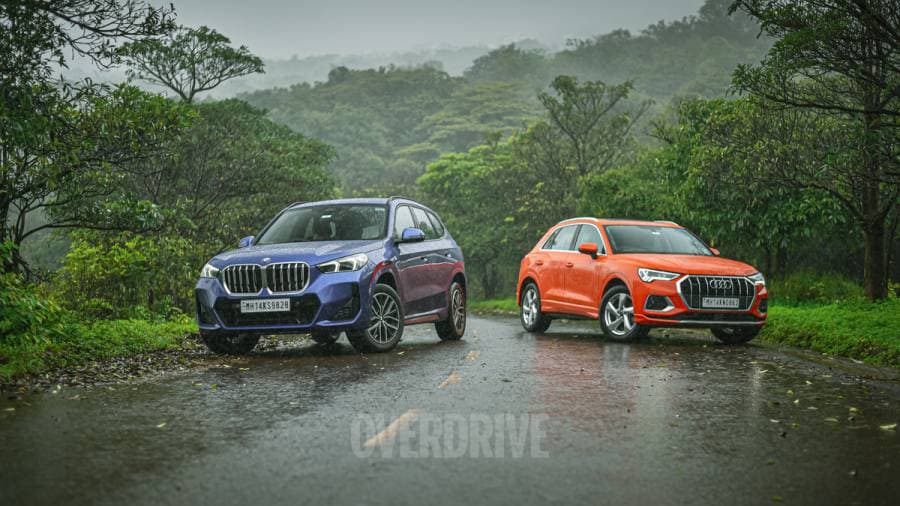
The Q3 goes about its business in that typically restrained but dignified Audi way. There are some splashes of flair with the contrasting silver accents in the bumper and the light signature, which work opposingly to these elements in the BMW, but the Audi does its thing of being timelessly contemporary. The X1 may have become a proper SUV at this point, with its upright profile and large glass area but the sleek silhouette of the Audi is equally appealing. The simple body panels work just as well as the more expressive surfacing of the BMW. That said the X1 could have done without those fiddly flip-type door handles and the Audi really does need a smarter set of alloy wheels.

At the rear, the two-part LED taillamps are quite attractive with their intricate detailing. We also like the crisp integration of this with the raked but fairly simple boot lid. The BMW again is more expressive with the large spoiler and the raked windscreen, but most eye-catching are the taillamps. The 3D treatment of these bulges out of the bodywork. There is more of the thoughtful use of contrasting materials in both. Generally, both SUVs here seem more grown up than their hatch-like predecessors and seem to be quite convincing in bringing out a sense of class that you might expect with your first luxury car.
2023 Audi Q3 vs BMW X1 Interiors, features, safety
Step inside the Audi Q3 first, and you are greeted with a cabin that's inviting in that typically restrained Audi way, again. The angular, quite technical design of the cabin with its stepped look feels modern in isolation, enhanced by the swathes of cold metallic surfaces and the soft-touch surfaces on the dash.

But it's clear that the newer BMW X1 takes this feeling up a notch. The asymmetrical dash design may not gel with you at first, but you will quickly be won over by the sheer quality and finish of the cabin. The graining on the metallic middle section, the stitching and the soft-touch panels all feel especially premium. A great touch is the graining on the speaker covers, and the extended soft materials on the door cards. Also, the extended ambient light signatures at night further this uplifting sensation.
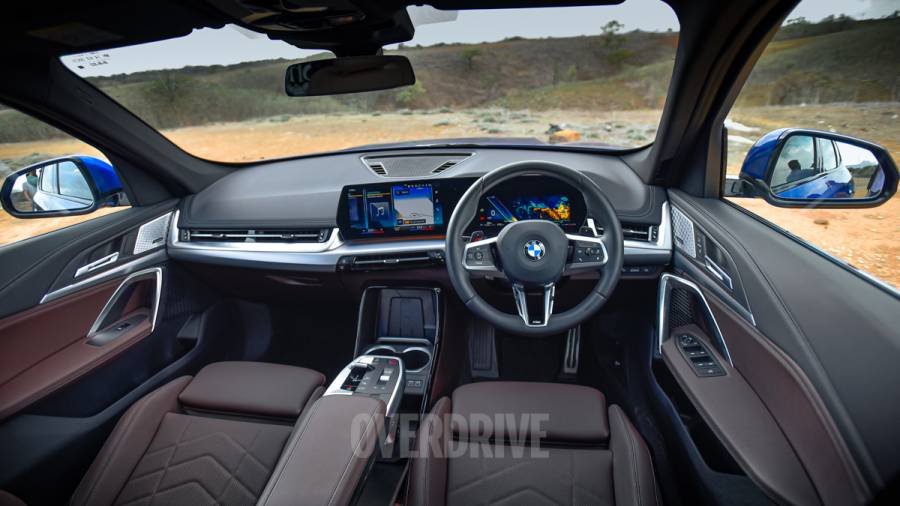
The Audi claws back ground with its screens. Yes, the ones in the BMW look more vibrant and offer up more information, and both are angled usefully to the driver. But the Audi's slightly smaller 10.1-inch unit is the easier one to navigate with its simple home screen and clear sub-menus. The Q3's larger 12.3-inch screen is also easier to read with its more traditional dials. The BMW's 10.25-inch unit can be customised more but the vertical dials aren't as simple, although the Google Maps projection here is very helpful.
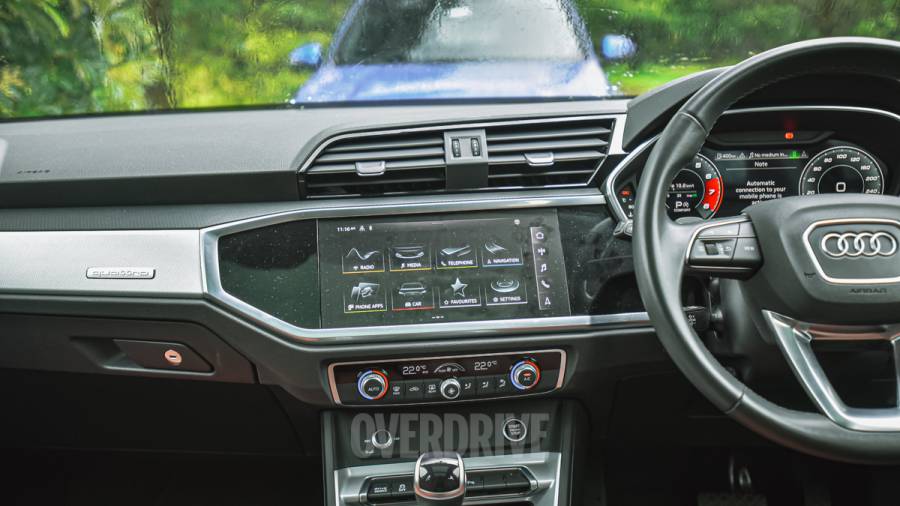
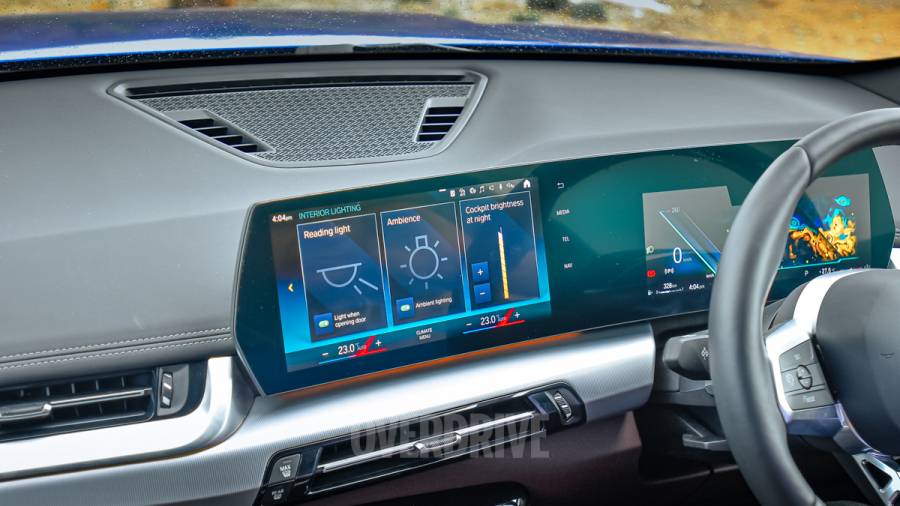
The physical climate knobs in the Audi, especially with the crisp knurled sense to them is a great complement to this. The BMW's touch panel is not as straightforward to use but the central console is more thoughtfully designed. The Audi has a more traditional layout here and offers decent, secure storage spaces, although the blank buttons and the bare panel below the climate controls could have been better executed.

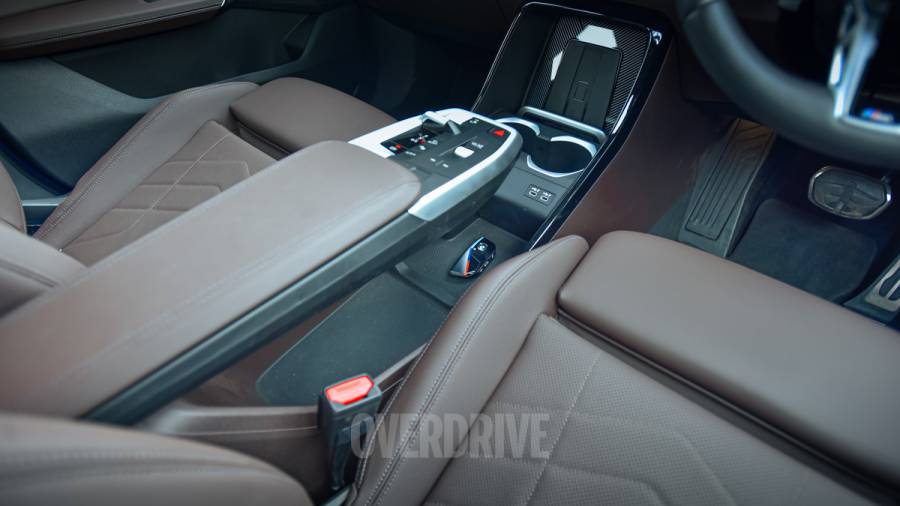
The BMW X1 shares this cabin with the electric iX1 so there is quite an EV-themed sense to the layout here. The vertical phone holder is thoughtfully done, keeping your device always in sight and the buttons on the layered central space are also quite easy to reach and offer clean shortcuts to the screen functions. The toggle type gear selector though, isn't as easy to use as the more traditional one in the Audi.
The layered design offers quite a bit more space than the Audi, but the top-covered section is too shallow to hold anything substantial. You can put larger items in the lower section but the open design leaves them unsecured.
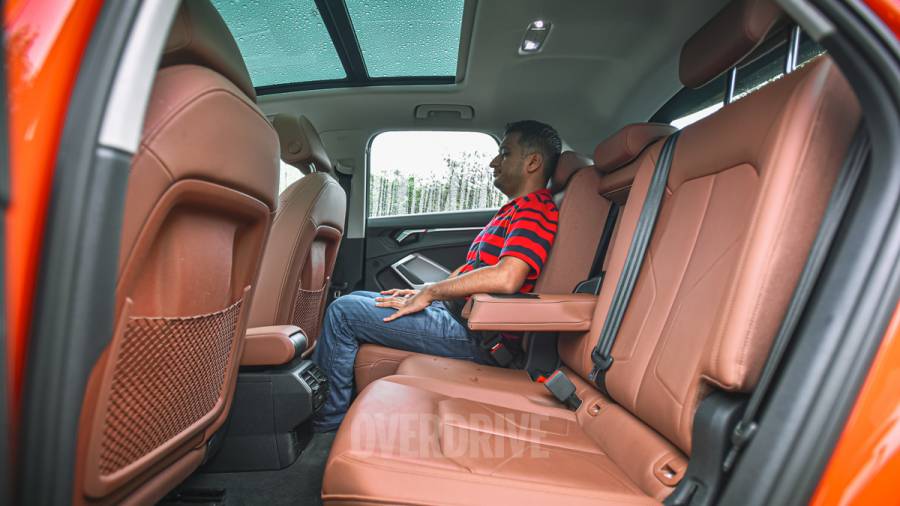
But you, and especially your family, will be equally interested in the rear-seat ambience. Both the SUVs here have grown larger with this generation, the Q3 significantly so. This means a more spacious backseat in both. The lighter colour palette in the Q3 helps enhance this sense, although the larger sunroof and windows help the X1 regain some ground.
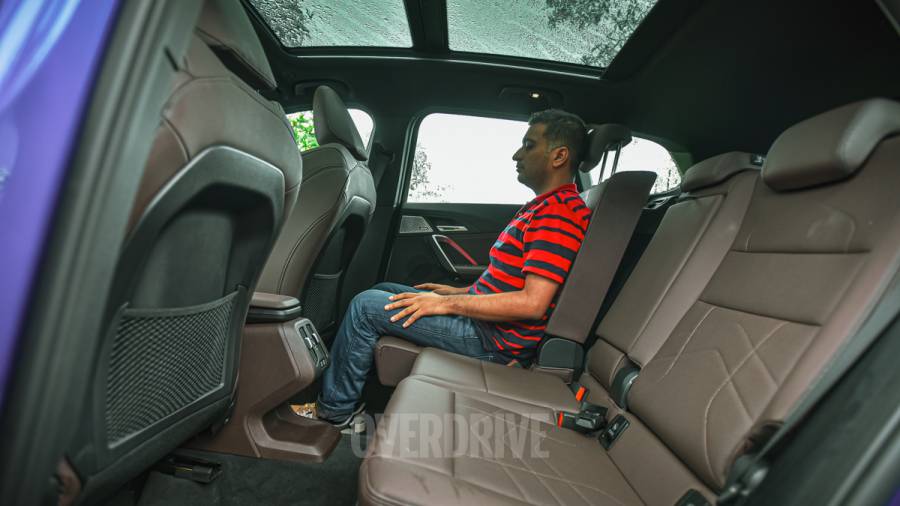
The Q3 may be very close to the X1 but the BMW still has a slight edge in terms of knee and footroom given its 12mm longer wheelbase, bringing these two close to the top of this segment. Both are also helped by the front seats being scooped out to maximise space. The Audi's more extended seat squabs help give it the better thigh support of the two, in which sense it is quite generous. This does make life more difficult for the middle passenger, although they will have to negotiate a significant central tunnel in both SUVs.The seatback in the Audi also reclines to a greater angle, which should be likeable to some.
The BMW counters this with slightly better cushioning and greater headroom. Audi has scooped out the Q3's headline to free up a good amount of headspace but the BMW's inherently more upright shape lends it an advantage in this regard. Both seats also slide, mainly to free up more boot space, but a stark miss in the Audi is that of any charge ports for this space.
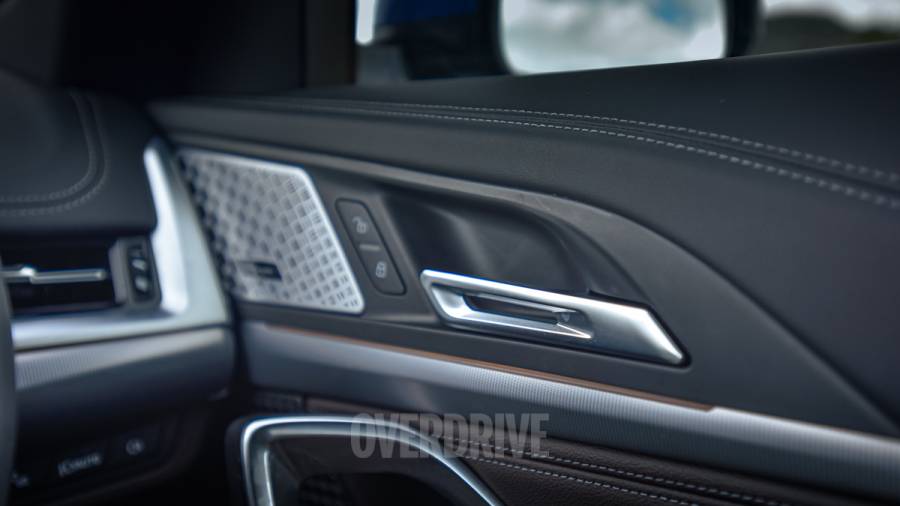
Neither of the SUVs here will give you ventilated seats, although the X1 does come with a basic but functional massaging feature. Both get LED lighting and wireless charging but the X1 also offers wireless Android Auto/Apple Carplay. Another significant feature advantage of the X1 is the Harman Kardon sound system.
In terms of safety, both get 6 airbags and TPMS but the BMW goes a step further with lane departure and front collision warning and a reversing assistant. This system is well-calibrated for our conditions and isn't too intrusive, although a full suite of ADAS systems should have ideally been offered in both.
2023 Audi Q3 vs BMW X1 Driving impressions, efficiency
Start driving these two SUVs, and you notice that the Audi Q3 will give that more traditional high-set seating position. You sit a bit higher up and the seats too are wider, so if you are of a wider frame, the Audi will suit you. It's a slightly more committed feeling in the BMW. You feel a bit more cocooned in here but visibility out the front is actually better, with the bonnet hump proving a nice guide.
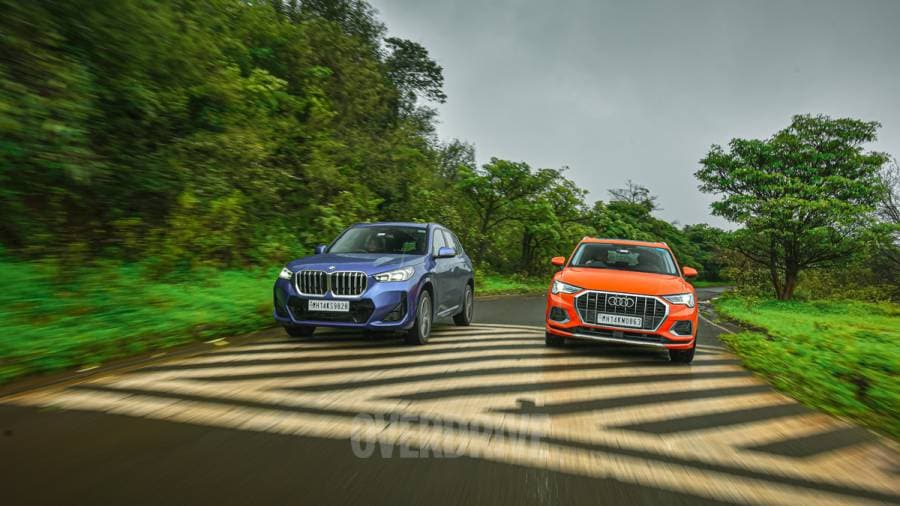
We found the sportier M Sport seats in the X1 more to our liking with their more prominent bolsters and the extendable squabs. Both will also give you well-finished steering wheels with tactile buttons. The Audi's feeling nicer with the metallic rollers switches but the BMW's is finished in softer leather and with better contours.
They may be powered by 2.0-litre turbos and are paired with seven-speed DCTs but that's about where the similarities end in terms of these SUVs' powertrains. The Audi is a turbo-petrol that puts out 190PS and 320 Nm with Quattro AWD as standard. The BMW is a diesel with 150PS and 360 Nm.
Surprisingly, it's the X1 that feels a touch quieter at lower speeds. There's some degree of pumped-in engine noise even in this diesel, so the sensation is more pleasing than the slightly gravelly note from the Q3's petrol. The difference grows at higher speeds where the BMW also controls wind and road noise better.
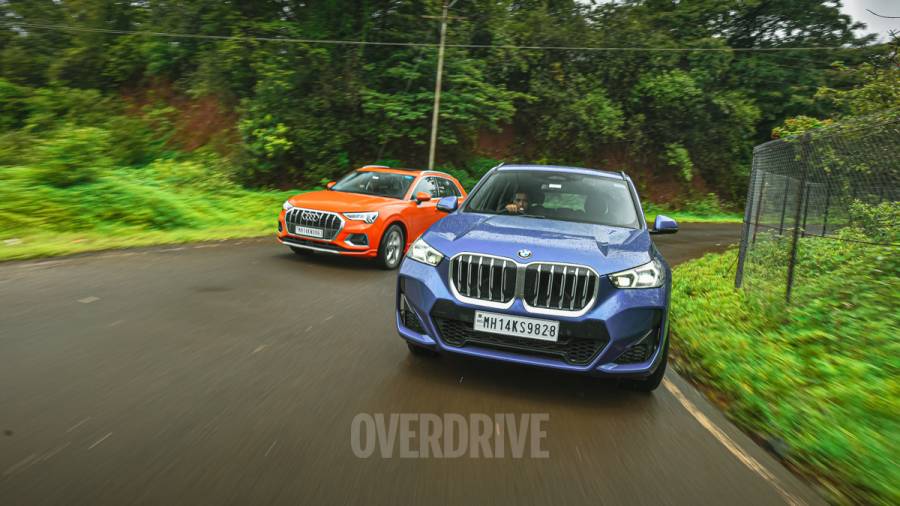
Both give you a good amount of low-end performance, so you will find yourself managing traffic easily. The BMW's diesel of course makes its higher torque more easily accessible. But the gearbox too seems to play a role in this. The BMW's DCT is more eager to downshift when you want to get a move on, putting you in the powerband quicker. The Audi will hold on slightly longer before it gives you that downshift. This may have been done for the sake of efficiency, which is no bad thing, and you can switch to the S gearbox mode to iron this out to a greater extent.
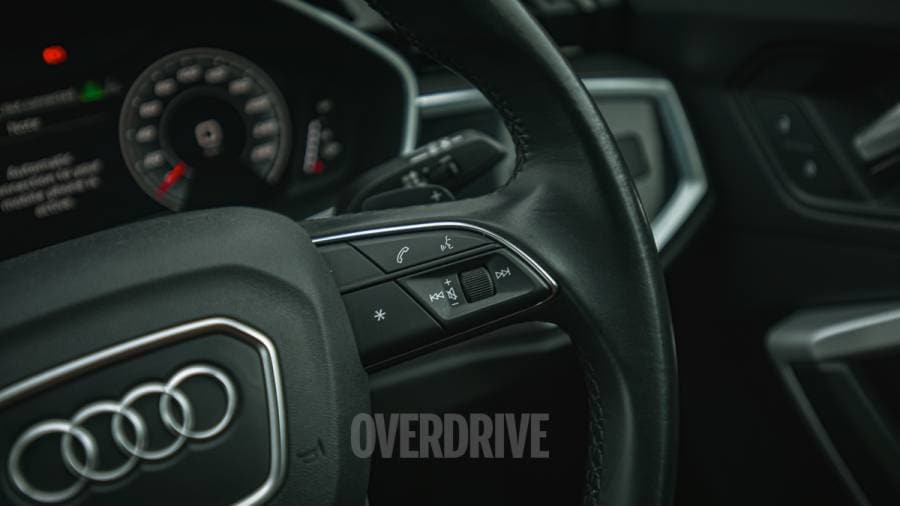
The Audi's higher power output shows itself out on the highway. Overtakes and building up to high speeds feel less stressed in the Q3. The boost mode in the X1 is useful in these situations, where holding the left paddles puts the gearbox in a heightened sense of aggression, but generally, these situations aren't as easygoing in the BMW.
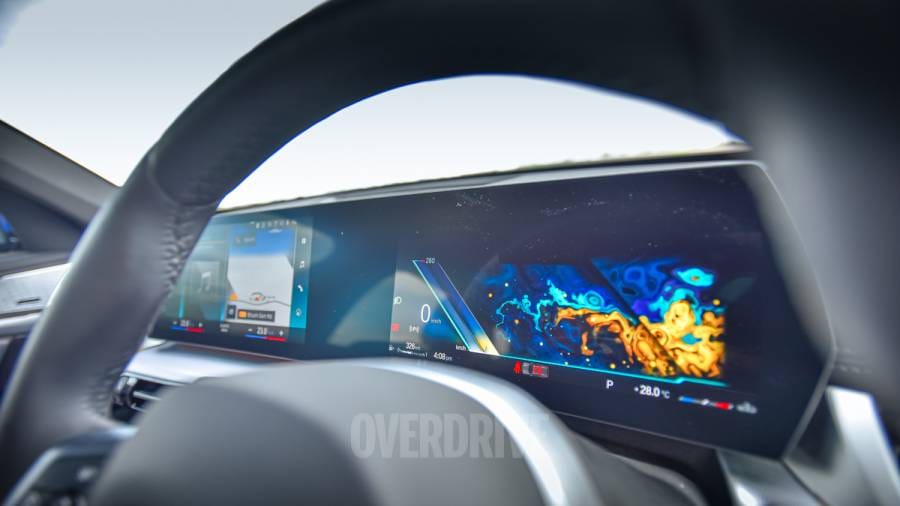
Now the Audi Q3 is about as efficient as you might expect a turbo-petrol of this size to be, the Eco mode doing its bit to dull down throttle responses. But the BMW happens to be especially efficient for a diesel. This is amplified by the greater measures it takes in its Eco mode, it'll turn down the climate control and even stick to a higher gear for longer. In fact, the drive modes generally are more customisable in the BMW, even letting you switch off ESC in the Sport mode. Keeping with that EV theme you also get relaxed, expressive and digital art driving themes.
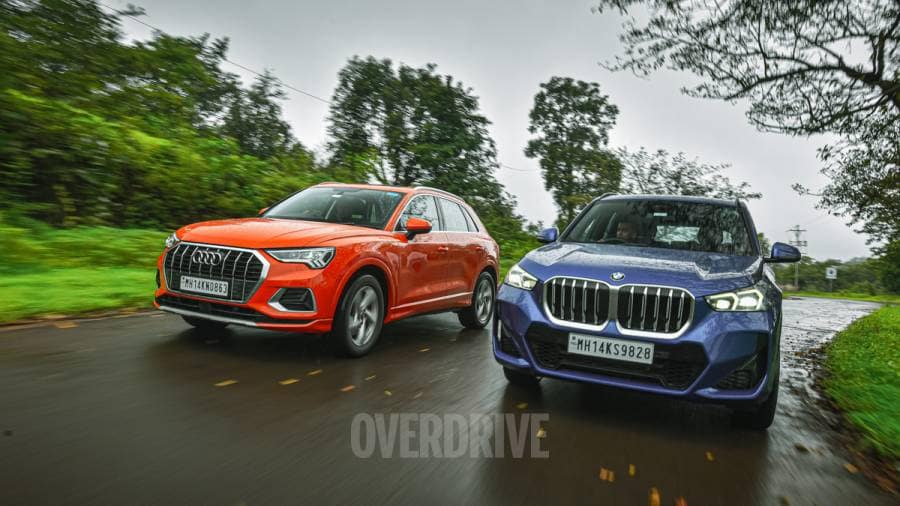
Both the Q3 and X1 feel typically German in how comfortable they are on the move. Both run on similar 18-inch wheels and you do notice broken roads and potholes in both at slower speeds. But the Q3's slightly softer set-up seems a touch better at handling our roads. It takes speed breakers and some of the smoother smaller bumps better. As you start going faster, the advantage shifts to the BMW. Both are steady at highway speeds but the BMW feels a touch better tied down in a straight line and it also seems to handle smaller imperfections like ruts and undulations on our highways better.
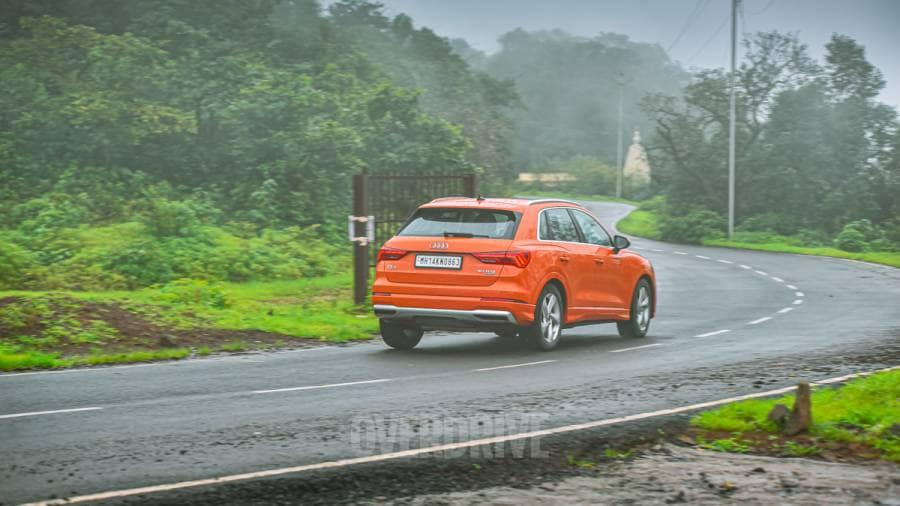
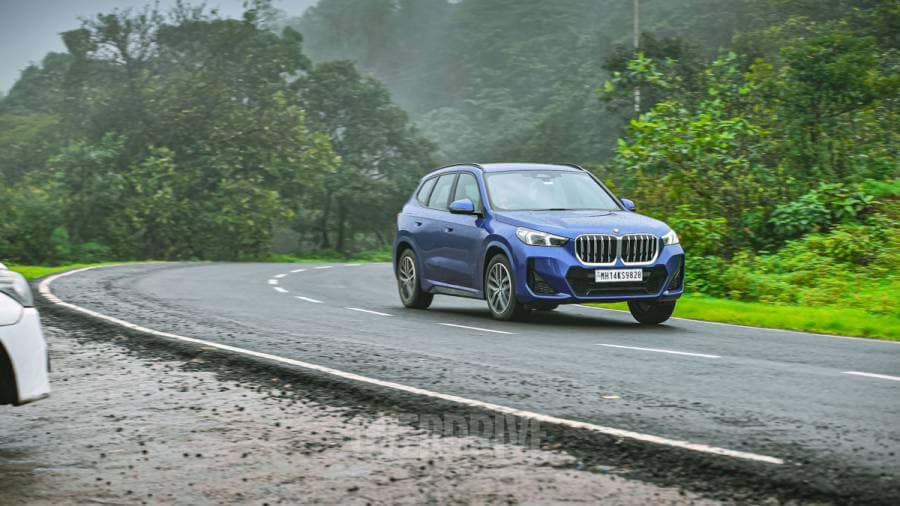
The addition of the AWD system in the Audi Q3 is a great one, starkly contrasted by the lack of it in the BMW X1 in the wet weather we drove these SUVs in. While both offer steering feel that's a good balance between directness and lightness you feel better connected to the road in the BMW by a small margin. There's more roll in the Audi but the Quattro system gives it a sure-footedness and control around bends that are easy to trust. The BMW does feel livelier here with better body control but is hampered by noticeable torque steer with its front-driven set-up. So drive a bit spiritedly and you will notice the wheel squirming in your hands as you put in a hard dab of throttle. In calmer highway driving, the X1 is the better choice. It feels more planted over our uneven surfaces at higher speeds, the Q3's softer set-up leading to some degree of vertical movements.

2023 Audi Q3 vs BMW X1 price, verdict
The BMW X1 is priced at Rs 65.59 lakh while the Audi Q3 costs Rs 62.52 lakh. This does seem to cover for the diesel efficiency that the BMW touts and makes the Audi a good deal with the great performance and Quattro system. But the BMW X1 is marginally the better overall package. You get a more contemporary cabin with added features that make you feel all that more special. It may have the overall control of the Q3 but it also seems to be just that bit more engaging to drive without too much of a hit on comfort.
2023 Audi Q3 vs BMW X1 scores
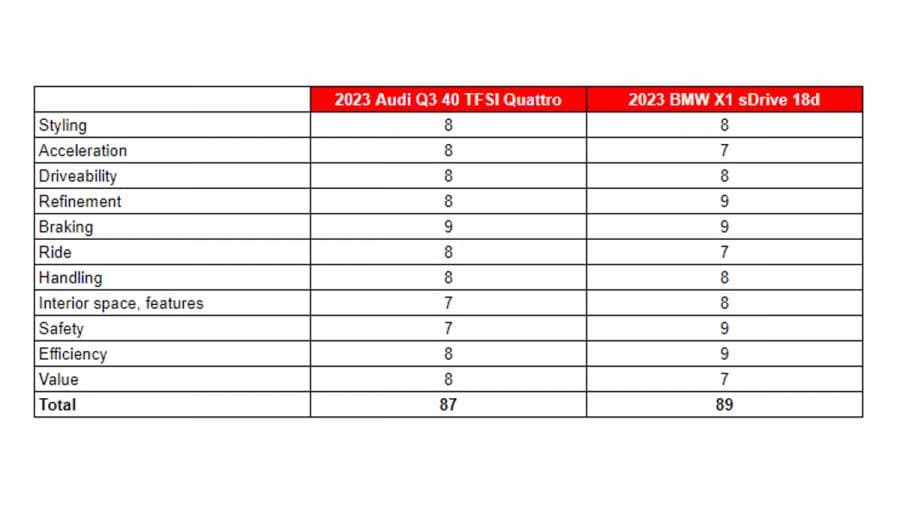
2023 Audi Q3 vs BMW X1 real-world mileage, performance
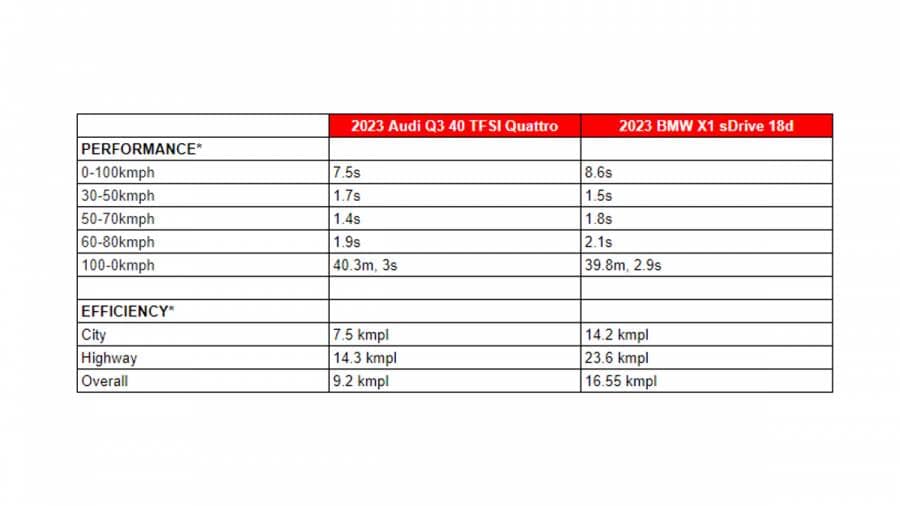
Also read,
2023 BMW X1 review, first drive grown up in a good way
Spec comparison: BMW X1 Vs Audi Q3 Vs Mercedes-Benz GLA Vs Volvo XC40
2022 Audi Q3 review, first drive baby Audi SUV grows up
Starts Rs 32.48 Lakhs
1968cc
Automatic
150
380
15.17 Kmpl
Starts Rs 35.9 Lakhs
1995cc
Automatic
190
400
-NA-
Starts Rs 42.1 Lakhs
1950cc
Automatic
163
400
-NA-
Starts Rs 39.9 Lakhs
1969cc
Automatic
190
300
-NA-


